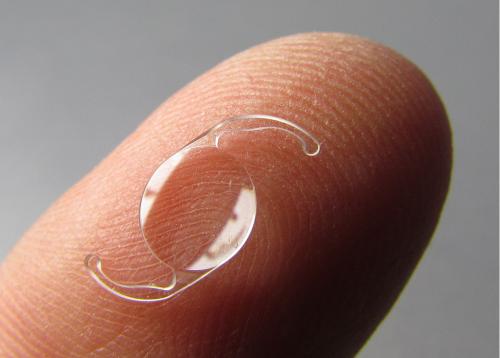Can Cataract Lenses be Replaced?

Yes, cataract lenses can be replaced through a surgical procedure called cataract eye surgery.
Cataracts occur when the eye's natural lens becomes cloudy, causing blurry vision and other visual disturbances. The lens is a clear and transparent part of the eye that sits behind the iris and helps to focus light onto the retina. The retina is the light-sensitive tissue at the back of the eye that converts light into electrical signals sent to the brain.
As we age, the proteins in the lens can begin to degrade and collect together, causing the lens to become cloudy. This clouding can interfere with vision, making it difficult to see clearly.
To restore clear vision, the clouded lens is removed and replaced with an artificial intraocular lens (IOL) during cataract surgery to restore clear vision.
Cataract Surgery
During the cataract surgery, your surgeon at an eye hospital in Delhi will give anesthesia to numb your eyes. Afterward, a small incision is made at the cornea’s edge to access the clouded lens. Then, your surgeon will insert an ultrasound probe through the incision to break down the cloudy lens into small pieces. This lens is then removed from the eye with the same ultrasonic probe. This procedure is called phacoemulsification or micro-incision cataract surgery (MICS)..
An artificial intraocular lens (IOL) is then implanted into the eye in place of the natural lens. The incision is usually self-sealing, so most cases may not require sutures. Various phacoemulsification techniques exist, primarily different in the incision's size and method.
Type of Artificial Intraocular Lens (IOL)
There are many different types of IOLs available. The type of IOL right for you depends on your needs and preferences. Your eye doctor will assess your eye condition and will advise you accordingly.The cataract surgery cost is based on the technique and lens used.
- Monofocal IOLs: Monofocal IOLs offer clear vision at a specific distance, either near or far, as they possess uniform power throughout with a single focal zone. Most patients will still require glasses for tasks not covered by their chosen monofocal IOL.
- Multifocal IOLs: Multifocal IOLs present multiple focal zones, each with distinct optical powers. They facilitate clear vision at both near and distant ranges, substantially reducing the need for glasses.
- Toric IOLs: Toric IOLs are designed to correct astigmatism and high cylindrical prescriptions. These specialized lenses incorporate varying optical powers in distinct regions. They can come in both monofocal and multifocal variations and are typically recommended for patients with significant corneal astigmatism or cylindrical power.
- Extended Depth of Focus IOLs (EDOF): Extended Depth of Focus IOLs, used in cataract eye surgery, are innovative intraocular lenses designed to provide a comprehensive range of clear vision, reducing the dependence on glasses or contact lenses for various distances. Unlike traditional monofocal IOLs, which typically offer clear vision at only one focal length (either near or far), EDOF IOLs aim to provide improved vision across multiple distances.
Cataract lens replacement through cataract eye surgery has transformed the lives of many patients, enabling them to see clearly once again. If you are experiencing cataract-related vision problems, consult Dr. Anisha Gupta, an eye specialist, to discuss your options and determine the best lens for your unique needs.
Post Your Ad Here

Comments (2)
Ovegho Okome1
Giveaways Affliate
This is very informative. Thank you for sharing as I'm having similar case presently.
Looking Distributors...5
Go4distributors - Get distributorship, distributio
help full information